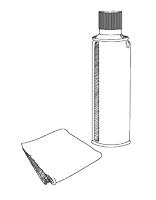
Contents
Historical European Martial Arts (HEMA) are a discipline that stands out for its roots in history, while offering a dynamic and rewarding sports practice. Based mainly in Europe and North America, they offer a unique opportunity to immerse yourself in the history of sword fighting and other weapons.
1. What are H.E.M.A.?
The term "Historical European Martial Arts" (HEMA) refers to a vast array of combat systems that were practiced in Europe in past centuries. HEMA encompasses a diversity of styles and techniques that vary significantly depending on the region, time, and weapon used.
These martial arts were used both in the context of war and peace, serving for tournaments and duels, for self-defense, as well as for battles and sieges. They include wrestling, fencing, archery, the use of various weapons such as the spear, sword, axe, war hammer, and much more.
It is important to note that HEMA is not a simple reenactment of ancient combat techniques, but rather a rigorous reconstruction based on historical sources. It is a living field of research and practice, which seeks to understand how ancient European fighters actually fought.
These historical sources include combat treaties and military manuals, historical chronicles, artistic representations of combat, judicial and parliamentary archives, as well as archaeological artifacts such as ancient weapons and armor. HEMA practitioners study these sources to reconstruct combat techniques and tactics, test their effectiveness and applicability, and understand the cultural and historical context in which they were used.
In short, HEMA is not just a way of fighting, but also a window onto European history, a form of historical study, and a path of personal and physical exploration. They offer both a tangible connection with the past and a way to develop practical skills in the present.
2. How was HEMA born?
The modern sporting practice of Historical European Martial Arts (HEMA) is relatively recent, its rise dating back mainly to the 1980s and 1990s. It was during this period that historians, martial artists, and history enthusiasts began to take an increasing interest in the study and practice of ancient European combat systems.
This renewed interest was largely stimulated by the rediscovery and translation of many medieval and Renaissance combat treatises. These texts, often accompanied by detailed illustrations, provided a valuable window into the combat techniques of the time.
The end of the 20th century saw the birth of several organizations dedicated to the study and practice of HEMA, notably the Historical European Martial Arts Coalition (HEMAC) and the Association for Renaissance Martial Arts (ARMA). These organizations have played a crucial role in the development of HEMA as a separate discipline, by providing forums for the exchange of ideas, the publication of research, and the organization of tournaments.
Since the beginning of the 21st century, the sports practice of HEMA has continued to gain popularity. Regional, national, and international competitions are now organized, with specific rules and standards to ensure the safety of participants. However, it should be noted that, although competition is an important aspect of modern HEMA, it is not the main objective of all practitioners. Many instead focus on historical study, treaty interpretation, and personal development.
3. What are the most practiced weapons
In Historical European Martial Arts, a wide variety of weapons are studied, reflecting the diversity of combat techniques used throughout European history. Nevertheless, some weapons are particularly popular among modern practitioners.
The Longsword :
The longsword, or "spada longa" in Italian, is arguably the most iconic and studied weapon in HEMA. Mainly used from the 14th to the 16th century, it is known for its versatility and balance. The fencing treatises that teach the use of the longsword are among the most numerous and best preserved, which has greatly contributed to its popularity among HEMA practitioners.
The Saber :
The saber was widely used throughout Europe, particularly from the 18th to the 20th century. Saber styles vary greatly, from British military fencing to the Polish szabla, to the Hungarian cavalry saber.
The Sword and Buckler
The sword and buckler were a common combination in the Middle Ages, used both on the battlefield and in duels. The buckler is a small shield used to parry and deflect attacks, while the sword is used to strike
The Rapier :
Mainly used in the 16th and 17th centuries, the rapier is a long and thin fencing weapon, designed for precise strikes. Rapier fencing is a major component of HEMA, especially in Italian and Spanish styles.
The Poleaxe :
These long-handled weapons, which may include points for piercing armor or blades for slicing, were extremely popular on medieval battlefields.
Wrestling :
Although it's not a weapon per se, wrestling (or "ringen" in German) was an integral part of many medieval combat systems. It is often studied alongside fencing.
It's worth noting that the list above is by no means exhaustive. Many other types of weapons are studied within the scope of HEMA, including the dagger, the stick, the war hammer, the spear, the bow and arrow, to name just a few.
4. Where and How to Learn HEMA
As with any martial art, the key to learning HEMA is regular practice. There are several options available to you for this.
Join a club or association
The most recommended option to learn HEMA is to join a local club or association. Numerous HEMA clubs exist worldwide, where you will find experienced people ready to share their knowledge with you.
Moreover, being in contact with many practitioners of all levels will help you progress faster and allow you to benefit from different points of view, appreciate different fighting styles and test your progress against multiple sparring partners.
Here are some websites to help you find a club near you:
- https://www.hemaalliance.com/
- https://www.historicaleuropeanmartialarts.com/hema-club-finder/
- https://hemaratings.com/clubs/
- https://www.amheonweb.net/ (France)
- Germany HEMA Clubs Maps (Germany)
Attend Workshops or Gatherings
Beyond regular club training, or if you can't find any nearby clubs, you always have the option to join one of the many events organized around HEMA practice.
In addition to competitions, training workshops are often organized for those who wish to deepen their knowledge and improve their skills. These workshops are typically led by recognized experts in the HEMA field and provide intensive training on a specific aspect of martial arts. Topics can vary, from the use of a particular weapon, like the longsword or the saber, to the in-depth study of a historical combat manual. Here are some of the most renowned ones:
- FightCamp: This annual event in the UK offers a series of HEMA workshops and competitions. It provides a wide variety of classes for different weapons and skill levels.
- Dijon's HEMAC: This is one of the largest HEMA events in Europe. It offers a full week of workshops, lectures, and tournaments.
- Swordfish: This is one of the most prestigious HEMA tournaments and takes place in Sweden. It also offers training workshops led by recognized HEMA experts.
- WMAW (Western Martial Arts Workshop): This biennial event takes place in the United States and offers a series of intensive workshops covering a wide range of Western martial arts.
- HEMA Germany's Longpoint: This is one of the largest HEMA events in the United States, offering tournaments, workshops, classes, as well as opportunities to socialize with other HEMA practitioners.
- The Dutch Lions Cup: Located in the Netherlands, this event offers tournaments and training workshops for all skill levels.
- The Festival of the Sword: This is a large event held in Australia, offering a series of workshops, competitions, and tutorials.
Find Learning Resources
Today, thanks to the digital age, it is possible to learn HEMA without leaving your living room. Here are some ways to do it.
Books: Books are an invaluable resource for learning HEMA. They offer a depth of information that online articles often cannot match. Some books provide translations and interpretations of historical manuscripts, while others are modern guides for learning sword techniques and other forms of combat. Books allow in-depth and detailed study at your own pace, often with detailed illustrations to help visualize movements.
DVDs: While online video resources are abundant, DVDs can still play a valuable role in learning HEMA. They often provide structured and detailed instruction from recognized experts in the field. DVDs can include demonstrations of techniques, detailed explanations, and even training exercises that you can follow at home. They also offer the opportunity to watch and review techniques at your own pace, which can be particularly useful for beginners.
Online Videos: Many platforms, like YouTube, offer a plethora of video tutorials for learning HEMA techniques. These videos, produced by qualified instructors, are an excellent way to visually observe movements and techniques. Some channels even offer structured courses and tutorial series.
5. What equipment for HEMA?
The practice of Historical European Martial Arts (HEMA) requires a number of specific equipment to ensure the safety of participants and the effectiveness of learning. Fortunately, the range of specialized equipment for HEMA practice continues to grow and it is now possible to equip oneself at a reasonable price with quality material. Here is a list of the main necessary elements:
Training Weapons:
Training weapons, often called "simulators", are essential for training. These weapons can be made of steel, nylon, or foam, and they are designed to simulate the weight and balance of a real weapon while limiting the risk of injury
- All steel training weapons
- All plastic training weapons
- All foam training weapons
- All wooden training weapons
The Fencing Mask:
Head protection is absolutely necessary for HEMA practice. The fencing mask has become the most adequate protection in terms of quality / effectiveness / price ratio. They are available in 350N or 1600N and can be supplemented by a mask cover
The Gloves:
Gloves are essential to protect the hands, which are particularly vulnerable during practice. Traditional fencing gloves can be used, but they are not absorbent enough for the shocks inherent to HEMA weapons. It is therefore recommended to opt for a model with thick padding on the back of the hand and there are also shell models that are highly recommended for competition and particularly for steel.
All protection gloves for HEMA
Torso Protection:
A vest or fencing jacket is often worn to protect the trunk. Some HEMA schools may require additional torso protection, like a chest protector.
All torso protections for HEMA
Arm Protection :
Forearm guards and elbow pads can be worn to provide additional protection during contact training
Knee Protection :
Knee pads are often worn to protect the knees during fencing movements, especially during techniques that involve a knee on the ground.
Groin guard :
For men, a groin guard is generally required for the protection of the genital organs. For women, there are also pelvic protections adapted to their morphology.
All shells and pelvic protections
These equipment aim to minimize the risk of injury during practice. It's important to remember that although the equipment can help reduce risk, the key to safety in HEMA is controlled practice, correct technique, and respect for your training partners.

























